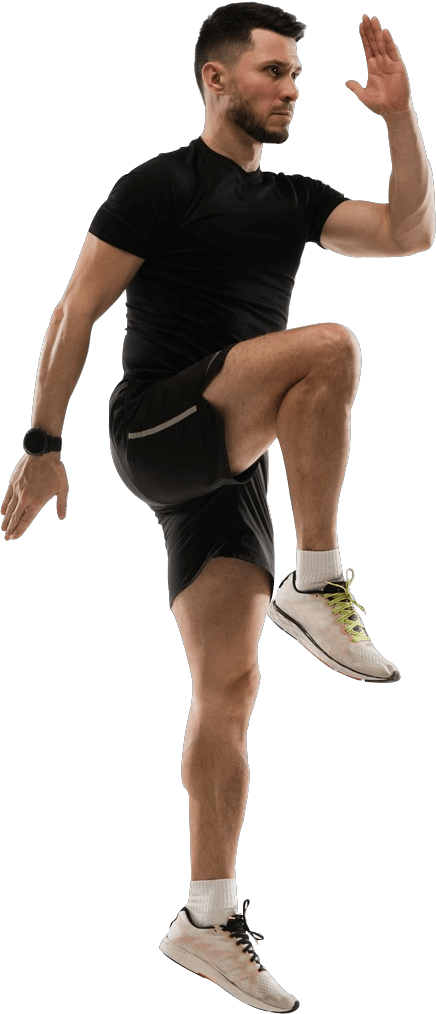In today’s world, where health and wellness are paramount, maintaining a clean gym environment has never been more important. With the rise of infectious diseases and the need for stringent sanitation practices, it’s crucial to understand the proper techniques to clean and disinfect gym equipment effectively.
So, whether you’re a fitness enthusiast, a gym owner, or simply a conscientious gym-goer, this ultimate guide will equip you with the knowledge to keep your workout space spotless and germ-free and take benefit of these cleaning guidelines for the gym.
In this comprehensive article, we will delve into the nitty-gritty details of cleaning gym equipment, from the weights, barbells, dumbbells, and machines to yoga mats and treadmills, we will leave no equipment unturned.
You’ll learn the importance of regular cleaning routines, the best cleaning products to use, and how to tackle those hard-to-reach nooks and crannies that hide bacteria and sweat.
But it doesn’t stop there! We’ll also address common concerns such as handling sweat, odours, and hygiene etiquette in shared gym spaces.
We’ll provide practical tips and tricks to make the cleaning process quick and efficient, ensuring that you spend less time scrubbing and more time breaking a sweat.
Now if you are wondering about what makes a good and clean gym environment, then you are on the right path
WHY IT’S IMPORTANT TO CLEAN GYM EQUIPMENT
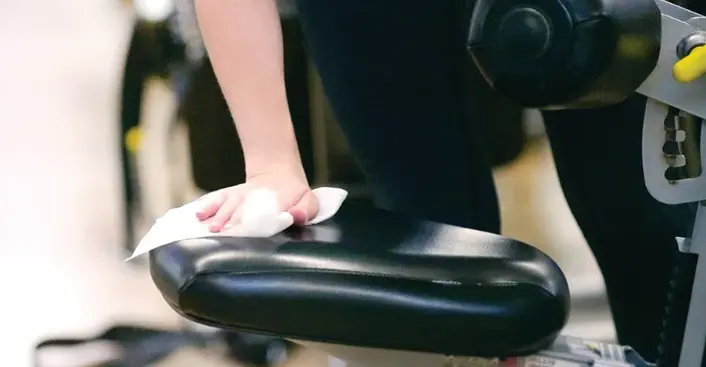
Maintaining cleanliness in the gym is not just about aesthetics; it plays a vital role in creating a safe and healthy environment for all gym-goers. One of the primary reasons why it’s important to clean gym equipment is to prevent the spread of germs and bacteria.
In a high-traffic space like a gym, equipment such as weights, machines, and exercise mats are constantly being touched, sweated on, and shared among users. Without proper cleaning, these surfaces become breeding grounds for harmful microorganisms that can cause infections and illnesses.
Moreover, regular cleaning and disinfection of gym equipment help minimize the risk of contagious diseases and promote the overall well-being of everyone in the gym.
Another crucial reason to clean gym equipment is to maintain its longevity and performance. As we engage in intense workouts, sweat, oils, and dirt accumulate on the equipment’s surfaces, which can lead to wear and tear over time.
Neglecting proper cleaning can result in the deterioration of materials, such as foam grips, upholstery, and rubber components. Regular cleaning helps remove corrosive substances, preserves the equipment’s integrity, and extends its lifespan.
Furthermore, by keeping your gym equipment clean, you ensure that it remains in optimal condition, providing safe and effective workouts for yourself and other gym users.
It is mandatory to clean gym equipment as nobody wants to workout in an unhealthy and unhygienic environment.
Must have products to clean gym equipment
When it comes to cleaning gym equipment effectively, having the right products on hand can make a significant difference. Here are six must-have cleaning products to clean gym equipment and keep it spotless and germ-free:
EPA-registered Disinfectant wipes/spray: Disinfectant wipes or sprays are essential for sanitizing gym equipment quickly and conveniently. Look for products that are specifically designed for fitness equipment and have antimicrobial properties.
These wipes or sprays should effectively kill germs and bacteria without damaging the equipment’s surfaces.
Microfiber cleaning cloths: Microfiber cloths are highly effective in removing dirt, sweat, and bacteria from gym equipment. They are gentle on surfaces and leave minimal streaks or lint behind. Microfiber cloths also have excellent absorption capabilities, allowing you to clean up spills and excess moisture efficiently.
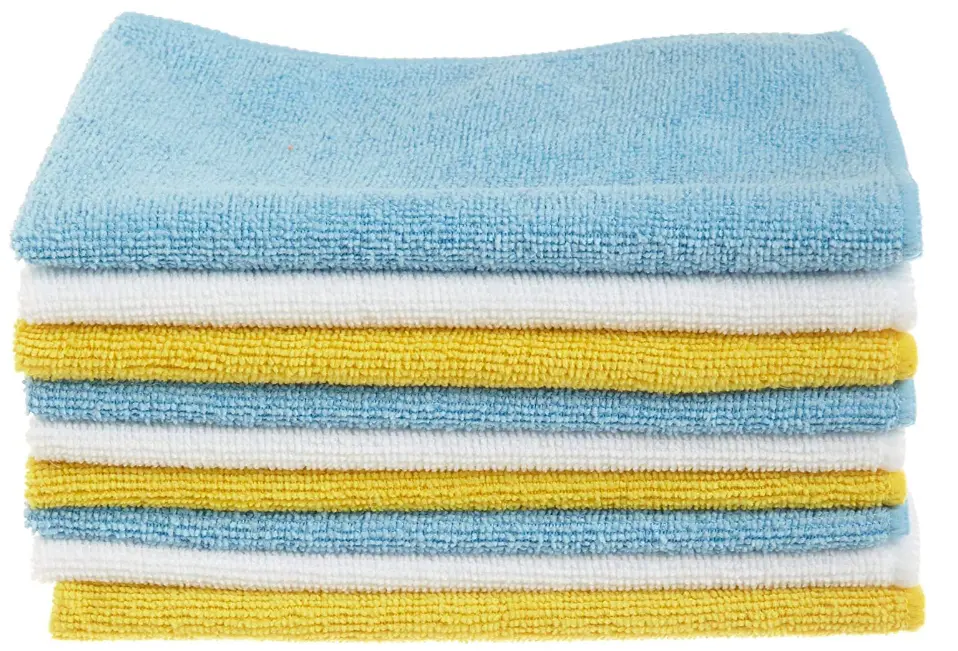
All-purpose cleaner: An all-purpose cleaner is versatile and can be used on various gym equipment surfaces, including metal, plastic, and rubber. Choose a cleaner that is safe for the materials commonly found in gym equipment. Ensure it effectively removes dirt, grime, and sweat while leaving a fresh scent.
Odour-neutralising spray: Gyms can develop unpleasant odours due to sweat and bacteria accumulation. Having an odour-neutralising spray can help combat these odours and leave the gym smelling fresh and clean. Look for products specifically formulated to eliminate odours instead of just masking them.
Bristled brush or toothbrush: A bristled brush or toothbrush can be handy for cleaning hard-to-reach areas, crevices, and textured surfaces on gym equipment. These small brushes can help scrub away stubborn dirt, grime, and sweat residues effectively.
Rubber rejuvenator: If your gym equipment includes rubber components like grips or mats, a rubber rejuvenator can help restore their appearance and durability. This product conditions and revitalizes rubber, preventing it from drying out and cracking over time.
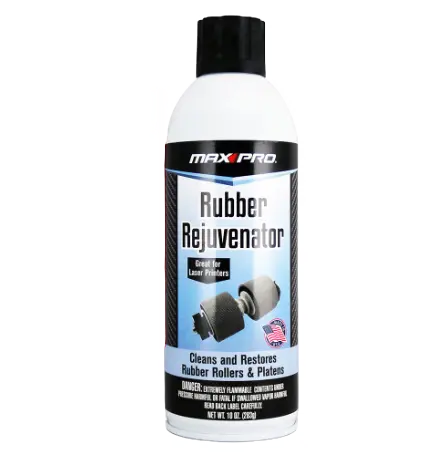
Remember to always read and follow the instructions on the cleaning products to ensure proper and safe usage. Having these must-have cleaning products readily available will enable you to maintain a clean and hygienic gym environment for yourself and others.
How to clean gym equipment?
We will talk step by step about different gym equipment
How to clean Dumbbells and weight plates
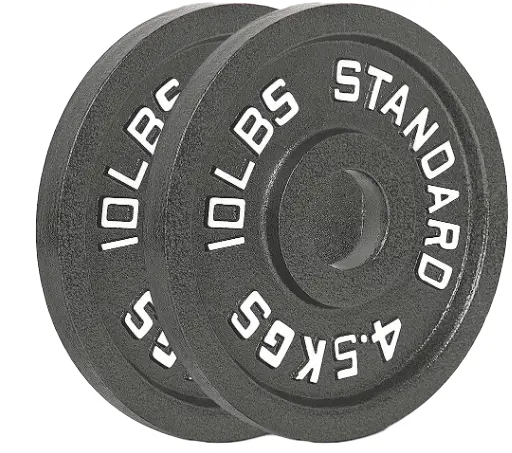
Gather the necessary supplies: You will need disinfectant wipes or a spray, a microfiber cloth or towel, and a bucket of warm water.
Start with a visual inspection: Inspect the weights and dumbbells for any visible dirt, sweat, or residue, and pay attention to crevices and textured surfaces where bacteria and grime can accumulate.
Wipe down the weights: Take a disinfectant wipe or spray and thoroughly clean each weight or dumbbell, focusing on all sides, pay special attention to the handles and any areas where hands come into contact and ensure you cover the entire surface, including weight plates and collars.
Clean the crevices: For textured or creviced areas, use a microfiber cloth or toothbrush dipped in warm water to scrub away any dirt or residue. Moreover, be gentle yet thorough to avoid scratching the surface.
Rinse if necessary: If your weights or dumbbells have accumulated a significant amount of dirt or cleaning product residue, you may want to rinse them with warm water.
Use a clean cloth or towel to dry them thoroughly afterwards.
Dry the weights: After cleaning, make sure the weights and dumbbells are completely dry before returning them to their storage area. This helps prevent the growth of mould or mildew.
Repeat the process regularly: Regularly cleaning your weights and dumbbells is crucial for maintaining hygiene. Furthermore, establish a routine to clean them after each use or at least once a week, depending on the frequency of use.
By following these steps, you can ensure that your weights and dumbbells are clean, free from germs, and ready for the next workout. Regular habit to clean gym equipment not only promotes hygiene but also helps extend the lifespan of your equipment.
How to clean Yoga mat and Floor mat
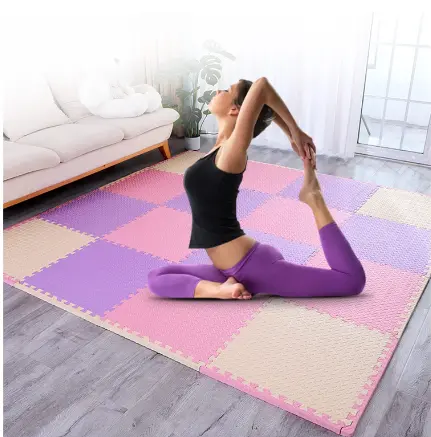
Prepare the cleaning solution: Fill a bucket or spray bottle with warm water and add a mild detergent or yoga mat cleaner.
Avoid using harsh chemicals that could damage the mat’s surface or cause skin irritation.
Lay out the mat: Find a clean and spacious area where you can lay out the mat for cleaning.
Wipe down the mat: Dip a soft cloth or sponge into the cleaning solution and gently wipe down the entire surface of the mat, pay extra attention to areas that come into direct contact with your hands, feet, or body during practice.
Scrub stubborn stains: For any stubborn stains or dirt buildup, use a soft-bristled brush or toothbrush.
Apply gentle pressure and scrub in a circular motion to remove the stains. Be careful not to scrub too hard to avoid damaging the mat’s surface.
Rinse the mat: If your mat is waterproof or resistant, you can rinse it with clean water to remove any remaining detergent or residue. Moreover, use a showerhead, hose, or a clean damp cloth to thoroughly rinse the mat.
Remove excess water: Gently squeeze the mat or roll it between two towels to remove excess water.
Avoid wringing or twisting the mat, as this can cause damage.
Air dry the mat: Lay the mat flat or hang it in a well-ventilated area away from direct sunlight then allow it to air dry completely before rolling or storing it. Importantly, avoid folding the mat while it is still damp, as this can lead to mould or mildew growth.
Refresh with a spray: Once the mat is dry, you can spray it with a yoga mat spray or a mixture of water and essential oils to provide a refreshing scent and additional antibacterial properties. Here is the best disinfectant spray for gym equipment.
Regular maintenance: To keep your yoga mat clean between deep cleanings, wipe it down with a damp cloth after each use as this helps remove sweat and dirt buildup and maintains its hygiene.
By following these steps, you can ensure that your yoga and floor mats stay clean, fresh, and free from bacteria. Furthermore, regular routine to clean gym equipment and its proper maintenance not only prolongs the lifespan of the mat but also provides a hygienic surface for your yoga practice.
How to clean weight bench:
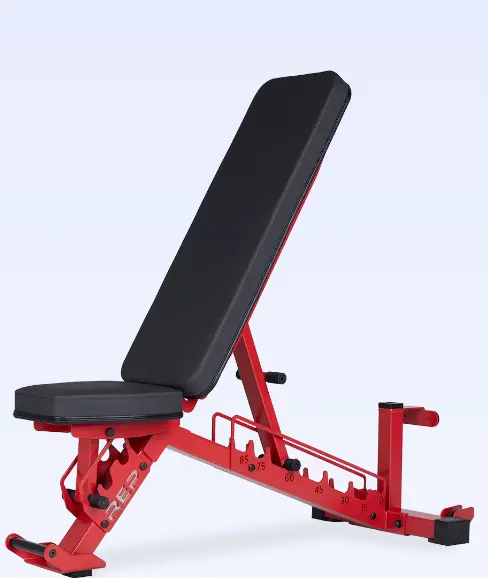
Gather the necessary supplies: You will need disinfectant wipes or a spray, a microfiber cloth or towel, and a bucket of warm water.
Clear the bench: Remove any personal items or equipment from the bench and set them aside.
Inspect the bench: Check the bench for any visible dirt, sweat, or stains. Pay attention to areas where the body comes into direct contact, such as the seat and backrest.
Wipe down the bench: Take a disinfectant wipe or spray and thoroughly clean the entire bench, including the seat, backrest, and any armrests or handles. Ensure you cover all surfaces and crevices. Use a microfiber cloth or towel to wipe away any excess moisture.
Pay attention to upholstery: If the bench has upholstery, check for any stains or spills. For fabric upholstery, use a fabric cleaner or a mild detergent mixed with water to spot-clean the affected area. Blot the stain gently with a clean cloth or sponge, being careful not to saturate the upholstery.
Rinse and dry: If you used a cleaning solution, rinse the bench with a clean damp cloth to remove any residue. This step is especially important for benches with fabric upholstery. Wipe the bench dry with a clean cloth or allow it to air dry completely.
Clean armrests and handles: If the bench has armrests or handles, pay extra attention to cleaning these areas. Use a disinfectant wipe or cloth to thoroughly clean and sanitize them.
Regular maintenance: Incorporate regular cleaning into your gym routine. Wipe down the benches with a disinfectant wipe or spray after each use to maintain cleanliness and prevent the spread of germs.
By following these steps, you can ensure that the benches in your gym are clean, sanitized, and ready for use. Clean gym equipment not only promotes hygiene but also helps preserve the longevity of the equipment and create a welcoming workout space.
How to clean a Barbell:
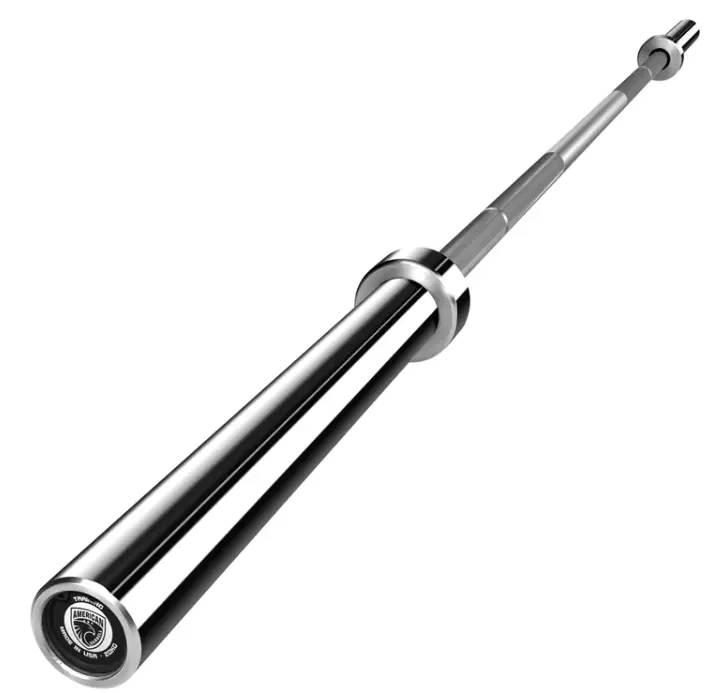
Gather the necessary supplies: You will need disinfectant wipes or a spray, a microfiber cloth or towel, a bristled brush or toothbrush, and a bucket of warm water.
Inspect the barbell: Check the barbell for any visible dirt, sweat, or chalk residue. Specifically, give attention to the grip area, sleeves, and collars.
Wipe down the barbell: Take a disinfectant wipe or spray and thoroughly clean the entire barbell, focusing on the grip area and any other areas that come into contact with the hands. Moreover, ensure you cover the entire surface of the barbell, including the sleeves and collars.
Clean the knurling: Use a bristled brush or toothbrush dipped in warm water to scrub the knurling on the barbell as this helps remove built-up dirt, chalk, and oil. Scrub gently yet thoroughly to avoid damaging the knurling.
Pay attention to sleeves and collars: Wipe down the sleeves and collars of the barbell with a disinfectant wipe or cloth because these areas can accumulate dirt and sweat and should be thoroughly cleaned to prevent the spread of germs.
Rinse and dry: If you used a cleaning solution or warm water, rinse the barbell with a clean damp cloth to remove any residue. Now wipe the barbell dry with a clean cloth or allow it to air dry completely.
Ensure that no moisture is left on the barbell to prevent rust or corrosion.
Regular maintenance: Incorporate regular cleaning into your gym routine. After each use, wipe down the barbell with a disinfectant wipe or spray to maintain cleanliness and prevent the buildup of dirt and sweat.
By following these steps, you can keep your barbells clean, sanitized, and in optimal condition.
A more in-depth guide for barbell cleaning
You might also wanna know about What length barbell do you need
How to clean Treadmills and Ellipticals:

Gather the necessary supplies: You will need disinfectant wipes or a spray, a microfiber cloth or towel, and a bucket of warm water.
Power off and unplug the equipment: Before cleaning, make sure the treadmill or elliptical is turned off and unplugged from the power source.
This is important for your safety and to prevent any accidental activation of the machine during the cleaning process.
Clear the surface: Remove any personal items or debris from the equipment, including water bottles, towels, or any other objects.
Wipe down the console and handles: Take a disinfectant wipe or spray and thoroughly clean the console, control panel, and any handles or handrails, pay attention to areas that are frequently touched. Moreover, ensure you cover the entire surface, removing any sweat, dirt, or fingerprints.
Clean the running belt or pedals: For treadmills, use a microfiber cloth or towel dampened with warm water to clean the running belt. Now wipe it from one end to the other, removing any dirt or sweat. For ellipticals, use the same method to clean the pedals.
Clean hard-to-reach areas: Use a soft cloth or toothbrush dipped in warm water to clean hard-to-reach areas, crevices, or textured surfaces and closely monitor the areas where dirt or sweat may accumulate, such as the edges, corners, or grooves.
Dry the equipment: After cleaning, use a clean dry cloth or towel to wipe down the entire equipment, ensuring that no moisture is left behind as this helps in preventing the buildup of mould or mildew.
Regular maintenance: Wipe down the treadmill or elliptical after each use or at least once a week, depending on the frequency of use.
Regular maintenance helps maintain cleanliness and prolong the lifespan of the equipment.
By following these steps, you can keep your treadmills and ellipticals clean, free from germs, and ready for use. Moreover, those who regularly clean gym equipment are safe from many harmful diseases.
FAQS
Should you clean gym equipment?
Yes, it’s essential to clean gym equipment regularly to maintain hygiene and prevent the spread of germs and bacteria among users.
Why clean gym equipment?
Cleaning gym equipment helps reduce the risk of infections and illnesses, ensures a safe workout environment, and promotes a positive gym experience for all users.
How do you clean metal gym equipment?
To clean metal gym equipment, use a mixture of mild soap and water, or a non-abrasive cleaning solution. Wipe down the surfaces with a damp cloth, then dry thoroughly to prevent rusting.
How do you clean foam on gym equipment?
To clean foam on gym equipment, use a mixture of mild soap and water. Gently scrub the foam with a soft cloth or sponge, then rinse with clean water and let it air dry.
How do you clean a dirty gym mat?
To clean a dirty gym mat, use a mild detergent mixed with water. Scrub the mat’s surface with a soft brush or cloth, then rinse thoroughly with clean water and allow it to air dry.
What cleaning solution do gyms use?
Gyms often use a disinfectant cleaning solution that is effective against bacteria and viruses, such as quaternary ammonium compounds (quats) or hydrogen peroxide-based cleaners. These solutions help maintain a hygienic environment for gym-goers.
Conclusion:
To conclude, I would say as a gym enthusiast myself and a person who goes to the gym daily the bad odor or unhygienic equipment can really be a turnoff.
It is our moral obligation to prevent others from diseases so a regular habit to clean gym equipment becomes necessary.
SO DON’T WAIT EVEN A SINGLE DAY AND GET TO CLEANING!
About me

Hi, I am Abdullah, a guy whose passion for fitness led to his bachelor’s degree in exercise science, for me what started as a personal fascination soon transformed into a professional career. Over the last six years, I have had the privilege of guiding and supporting numerous individuals on their own fitness journeys. Whether they were beginners taking their first steps into the gym or seasoned athletes aiming to break their personal records, I have been there every step of the way, providing personalized training programs tailored to their unique needs and goals.

